Top 12 Low Maintenance Perennials
Maintaining your garden does not have to be very time-consuming especially if your life is hectic and full of commitments other than gardening.
Check out this list of top 12 low maintenance perennials which will bloom year after year with minimal efforts from your side. These gorgeous plants come in variety of colours so you can mix and match as you wish. Don’t forget to group them according to their planting needs: similar soil type and pH, similar watering requirements, similar needs for sun or shade.
Perennials are plants that live more than two years, so they come back every spring. Aim to purchase a variety of plants that bloom at different times. This way, you will have a blooming garden throughout most of the year.
Coneflower (Echinacea spp.)
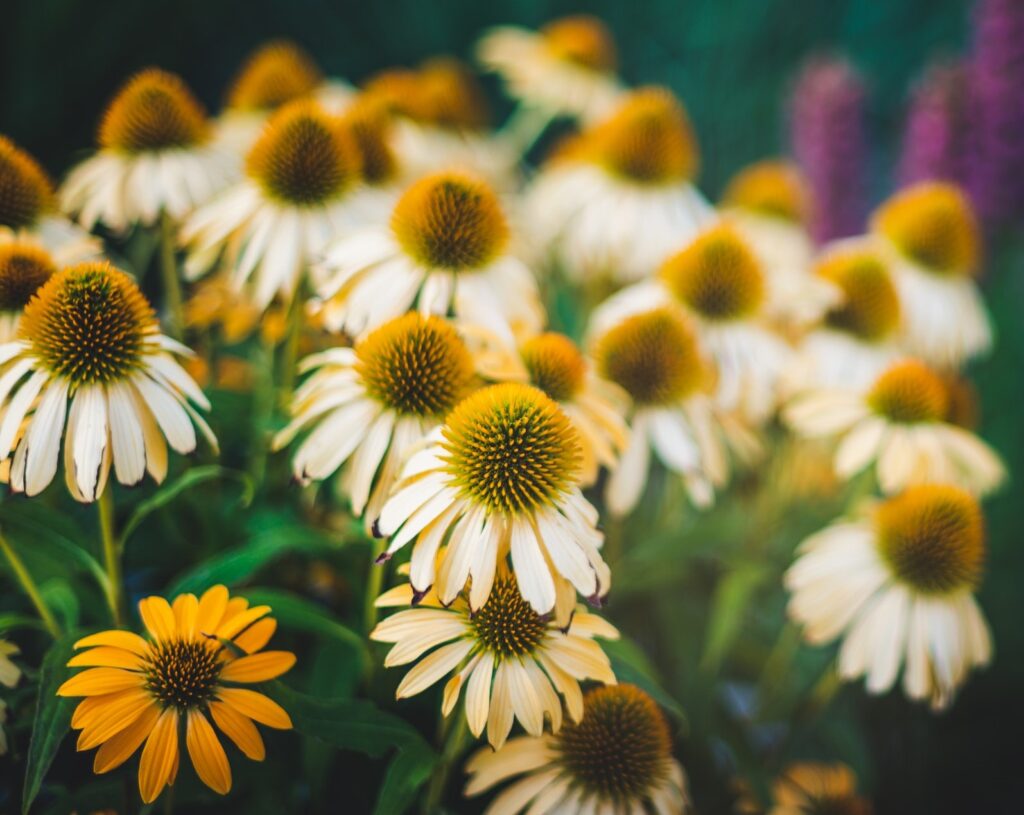
Commonly known as the coneflower, Echinacea blooms from June to August. They like full sun and are tolerant of hot temperatures, humidity, drought, and even poor soil.
Echinacea is a North American perennial in the Daisy family (Asteraceae) that draw butterflies, bees, and birds to the garden. Once the blooms have faded leave the seed heads and you’ll attract songbirds such as goldfinches!
As native plants with prickly stems, they are more deer-resistant than most flowering plants.
The most common species is Echinacea purpurea, the purple coneflower. But you can also find them in pink, white, red, orange, and yellow. They create a striking view when planted in masses, especially as a mix of various colours.
Usually coneflowers are bought as small plants with blooms already on the way, which can be planted in the ground in spring or early summer. They can grow up to 3 feet (90 cm) in height with a similar spread.
Excellent companions to pair with Echinacea are butterfly weed (Asclepias), blanketflower (Gaillardia), Black Eyed Susan, lupines, hardy geraniums, bee balm, phlox, coreopsis, salvia, baby’s breath, catmint.
USDA Hardiness Zones: 3–8
Daylily (Hemerocallis spp. and hybrids)
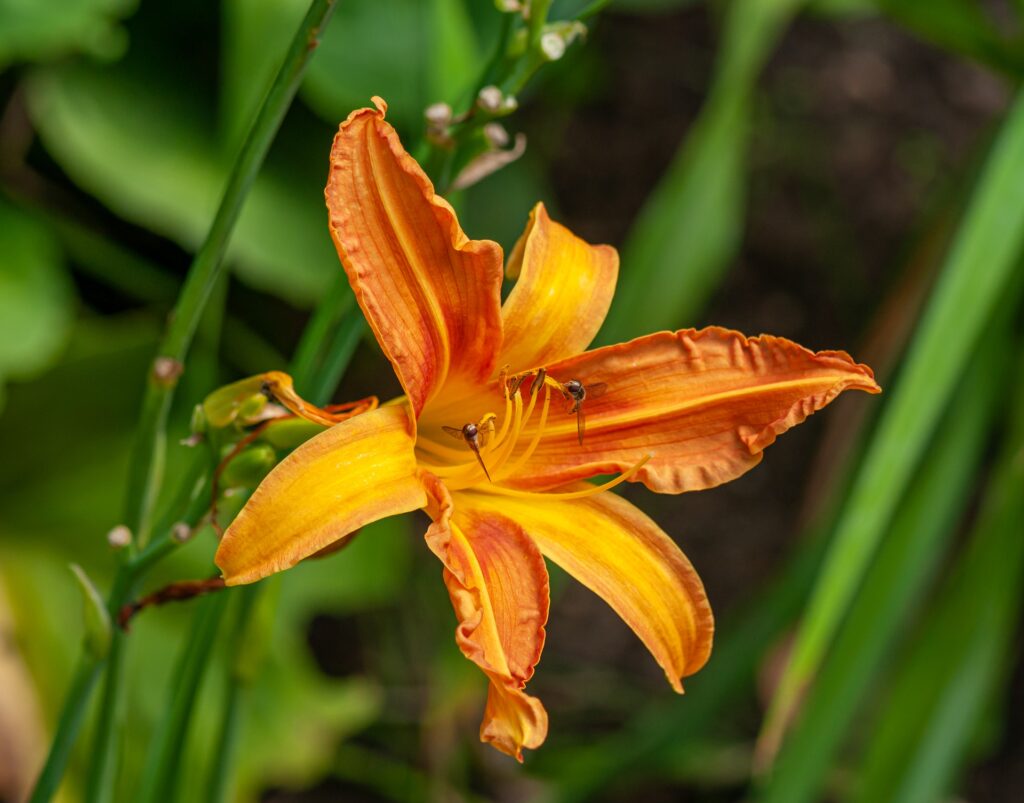
Daylilies are not lilies at all, despite their name. They belong to a different genus called Hemerocallis of the family Hemerocallidaceae that includes about 15 common species.
Most daylilies bloom for several weeks from March till midsummer, but some types have a repeat blooming pattern in the fall. Although individual flowers bloom only for a day or two, each plant will produce a large number of flower stalks and you will have continuous blooms as a result, plus their sword-like foliage add shape and texture to the garden throughout the year.
This upright, fragrant flower comes in a variety of colours except true green and true blue; petals can be bi-coloured, ruffled, single, double, with or without an inner eye.
Daylilies prefer full sun six to eight hours per day, but they can also grow in partial shade though will produce fewer blooms. While they are drought tolerant, they do better when they receive regular moisture. They tolerate a wide variety of soil conditions, but the soil must be well-drained. Daylilies are not deer-resistant so make sure to protect them.
Daylilies look great combined with salvia, purple coneflower, Russian sage, fernleaf yarrow, summer phlox, coreopsis, black-eyed Susan, blazing star, sedum, heuchera, ornamental grasses, and butterfly bush.
USDA Hardiness Zones: 3–9
Hosta (Hosta spp.)
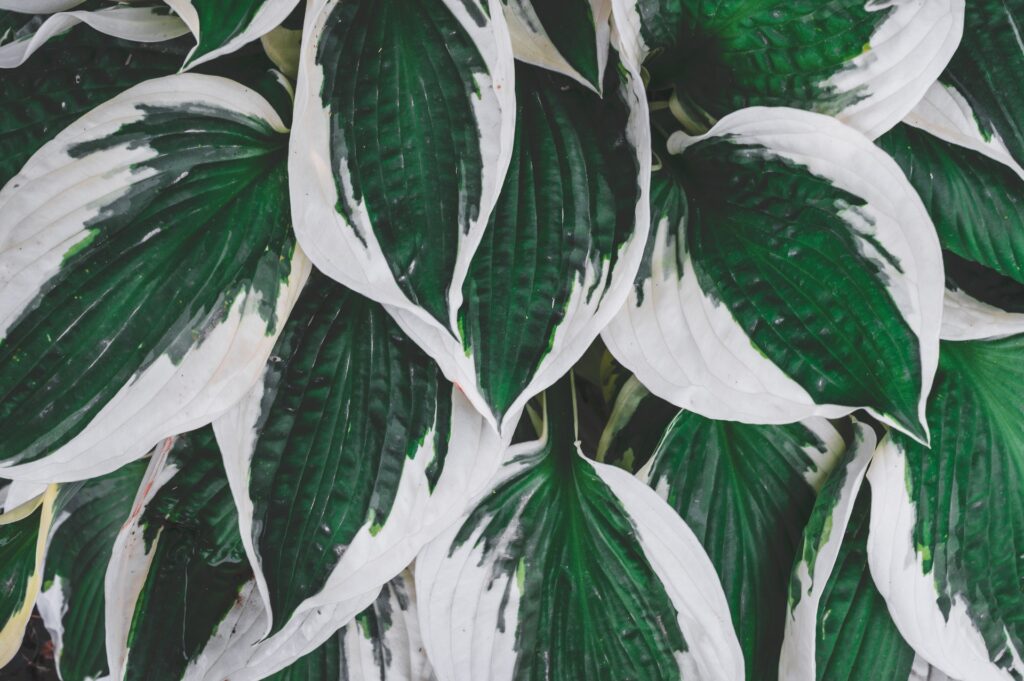
Famous for their beautiful foliage of green or bluish-green, hostas are also called plantain lily, a genus of the asparagus family (Asparagaceae), native to eastern Asia.
The leaves are detailed and excellent for adding interest to the landscape. Do watch out for slugs and deer, as hostas tend to attract them, though my neighbours and I managed to grow them well in our gardens with many deer visiting and slugs present.
The flowers are lavender or white and very attractive to bees, hummingbirds, and other pollinators, and some varieties have fragrant blooms.
Hostas are perfect plants for part shade or full shade, but some varieties can grow well in sunny spots. A good rule of thumb for planting hostas is the lighter the foliage, the brighter the sun can be.
These plants like rich, fertile soil which is well-drained.
Astilbe, ferns, perennial geraniums, bleeding hearts and heuchera are great companions for hostas. Spring flowering bulbs such as daffodils, scilla, muscari and fritillaria will add colour to the space while hostas are waking up after cold months.
USDA Hardiness Zones: 3–9
Lavender (Lavandula spp.)
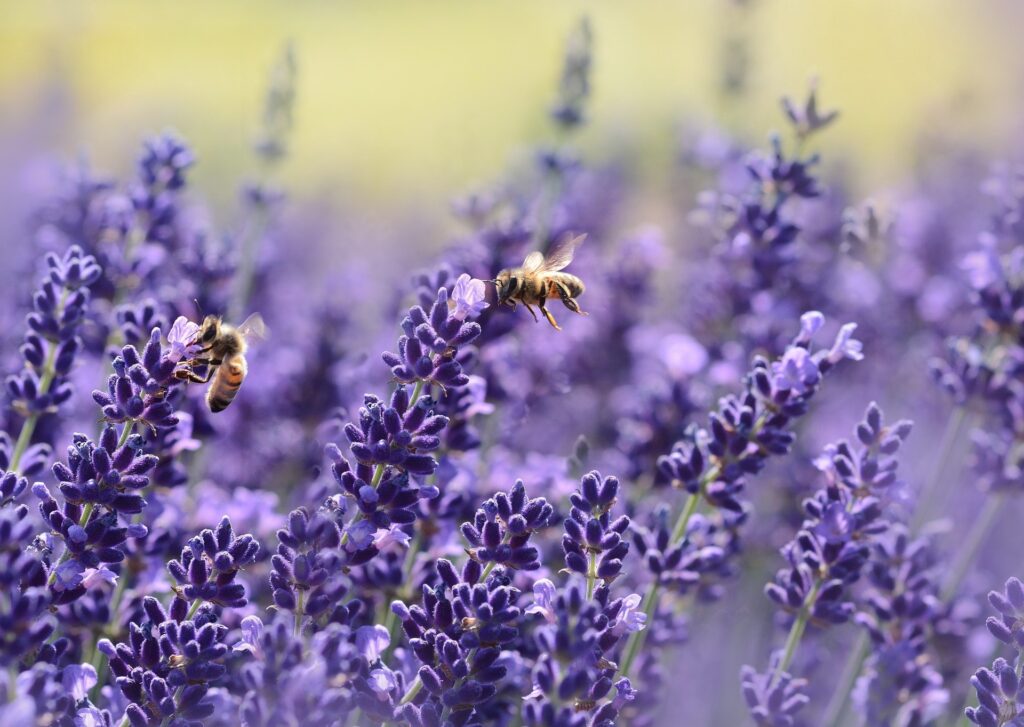
Prized for its fragrance, medicinal properties, and beautiful bluish-purple color, lavender is a genus of 47 known species of flowering plants in the mint family, Lamiaceae.
The plant is not picky and will survive in a wide range of soils, even poor soil. Its main requirements are lots of sun and good drainage. It attracts lots of pollinators to the garden and is deer-resistant.
Lavenders thrive in an open site in full sun in a well-drained, neutral to alkaline soil. Plants typically reach between 1 and 3 feet (30-90 cm) in height.
English lavender, Lavandula angustifolia, is more hardy and long-lived than French and Spanish lavenders, Lavandula dentata and Lavandula stoechas. Hardy lavenders (Lavandula angustifolia and Lavandula x intermedia types) can cope with temperatures down to about -15°C, and can therefore be left in the garden all year round.
Plant lavender along the entrance to your home, or near a seating area, or at the base of roses bushes. Echinacea, aster, sedum, baby’s breath, gazania, alliums will also thrive next to lavender as they have similar requirements.
Lavender is a natural repellent of moths, slugs, and deer. Any plants that suffer from these pests will benefit from having a lavender plant nearby. Lavender bushes attract bees that fruit trees require for pollination, but it also repels pests like the codling moth, which targets apple trees.
USDA Hardiness Zones: 5–9
Peonies (Paeonia spp.)
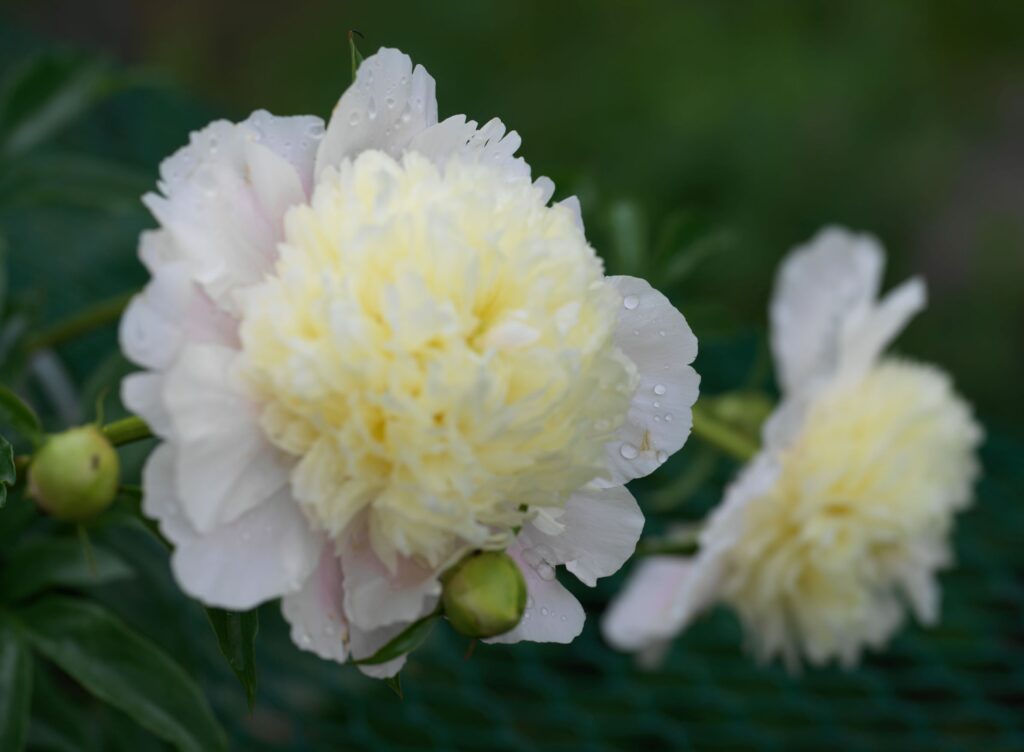
If you want to grow a fragrant garden, definitely add peonies to your must-have, low-maintenance perennials list. Peony is a flowering plant in the genus Paeonia, the only genus in the family Paeoniaceae. They come in shades of white, pink, red, and even yellow. They are deer and slug resistant.
Plant peonies at the beginning of autumn or early spring to enjoy their blooms in May-June. All they need is sunlight (minimum 6 hours of direct sun each day), fertile, moist, and well-drained soil with a pH level of 6.5, and space to grow their roots and get adequate nutrients.
They do require a little patience after planting, since they won’t bloom the first year and won’t produce ideal blooms until about the third year after they’re planted into the ground, but once they begin to bloom, they’ll work to beautify your garden without too much fuss.
Peonies blooms can get very heavy and eventually topple over, so it’s best to provide support by staking them. Before winter settles in, cut back your plant all the way to the ground.
Great companion plants for your peonies are pincushion flowers, hardy geraniums, yarrow and iris.
USDA Hardiness Zones: 3–8
Sage (Salvia spp.)
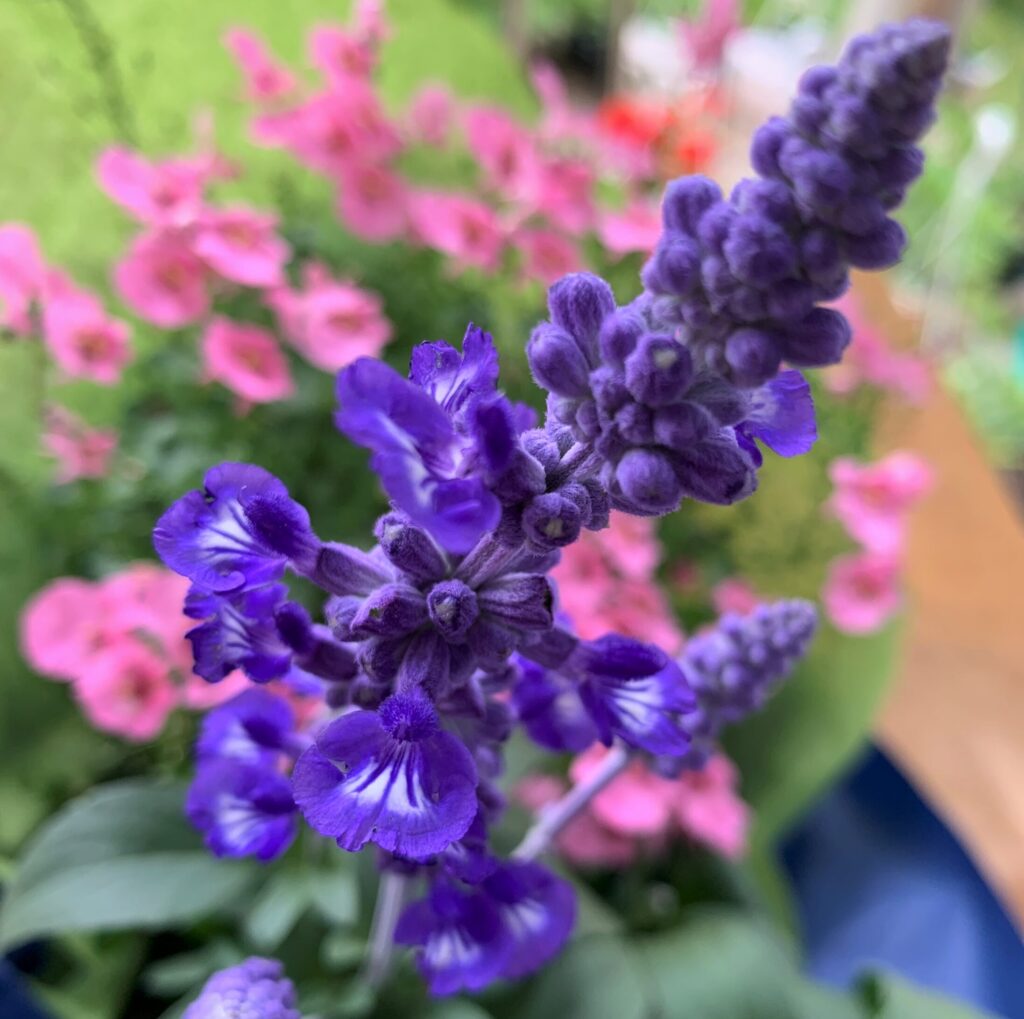
Sage is a hardy perennial with pretty, grayish green leaves that looks fantastic as a perennial border and in a vegetable garden as well. It grows spikes of gorgeous flowers in different colors, including purple, blue, white, scarlet red and pink. Depending on the variety the blooming period is from early summer till autumn.
The species known as common sage is Salvia officinalis, a member of the mint family Lamiaceae and native to the Mediterranean region. Salvia officinalis is used in cooking. There are several other sage species, including pineapple sage (S. elegans) and woodland sage (S. nemoros).
Once established, sage plants are extremely low maintenance, drought-tolerant, and deliciously aromatic additions to the garden.
Sage needs full sun and well-drained soil. Due to its scent deer and rabbits stay away from it. Many plants attract bees, butterflies, and hummingbirds.
In the garden, plant sage near strawberries, broccoli, cauliflower, rosemary, cabbage, and carrots to deter cabbage moths, beetles, black flea beetles and carrot flies, but keep sage away from cucumbers and onions. Thyme, sage, and lavender make a great group for planting together, especially in pots or containers.
USDA Hardiness Zones: 4–7
Sedum (Sedum spp.)
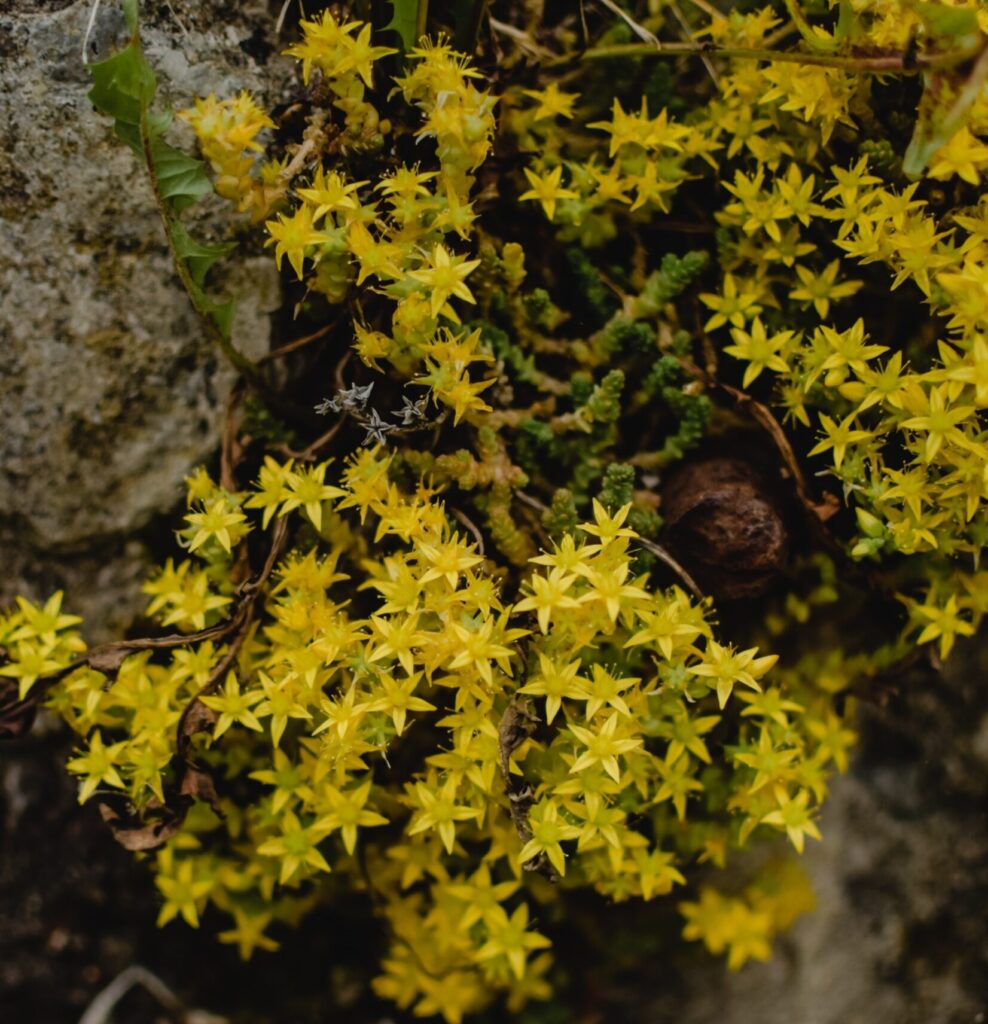
Sedums is a large genus of flowering plants in the family Crassulaceae. Also known as stonecrop, they come in many varieties, from creeping groundcovers to upright shrub-like plants. They are frequently used as ground covers in xeriscape gardens or rock gardens. Sedums are also perfect in borders.
They will thrive in full sun and well-drained soil. Some varieties can be grown in part shade. Sedums are drought-tolerant and can be planted in hot conditions. Because these perennials have succulent leaves, they can store water for future. However, their biggest downfall is too much water, which will cause them to rot.
The flowering period varies by species; some are spring bloomers while others flower in late summer and autumn. Colour varieties include white, yellow, pink, purple, red and orange.
Sedums vary in height. The smallest are just a few inches (8 cm) tall, and the tallest can be up to 3 feet (1 m).
Bees and butterflies love these flowers, making this plant perfect for pollinator gardens.
Asters and Chrysanthemums are hardy perennials that bloom in the fall and can be great companions to sedums. They will also do well next to dianthus, coneflower, Russian sage, black eyed Susan.
USDA Hardiness Zones: 3–9
Siberian Iris (Iris sibirica)
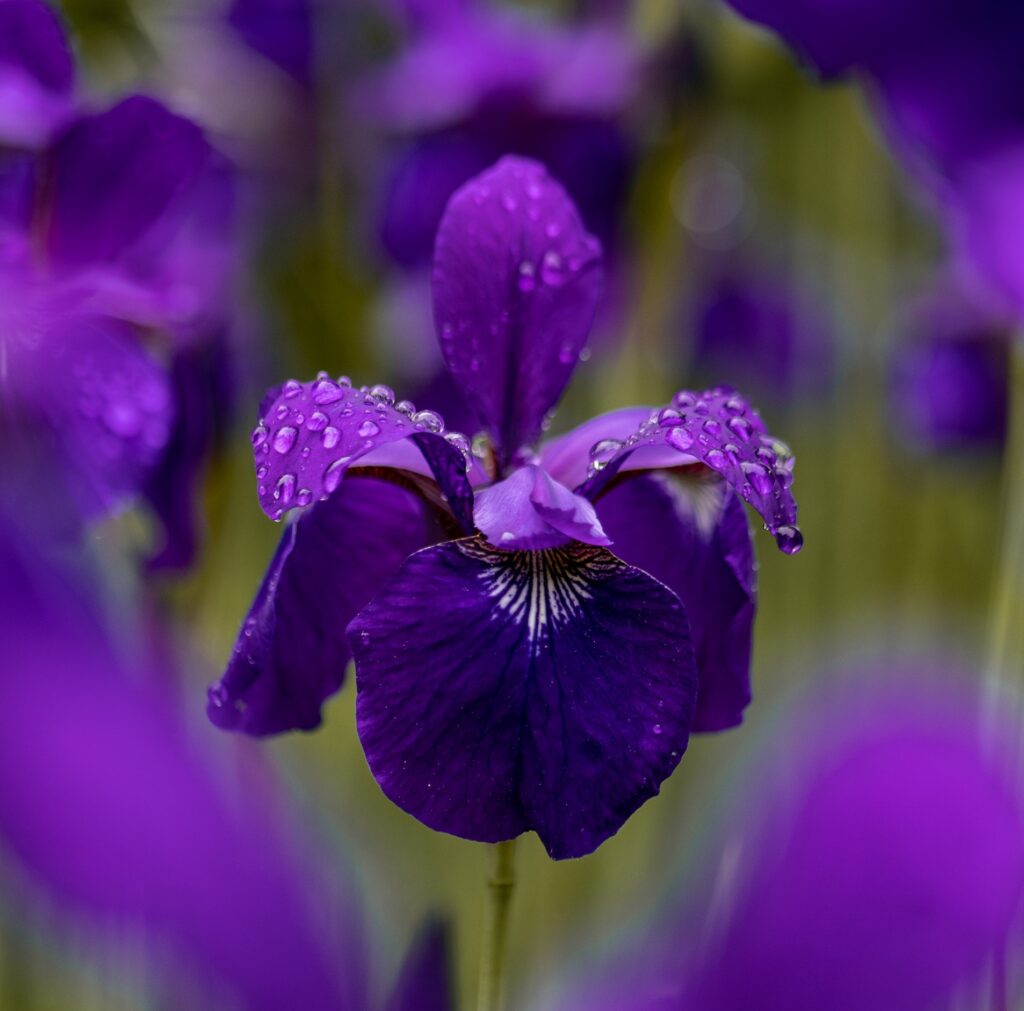
Siberian irises are beautiful plants, with lush, long-lasting blooms and narrow foliage, which remains attractive after the blooms are spent. The foliage continues to add texture, movement, and colour throughout the entire summer and autumn.
Plant Siberian iris in full sun to partially shady areas in a rich, fertile soil with good drainage; however, it will also perform in lean or poor soils.
Siberian iris plants can reach as little as 12 inches (30 cm) in height or grow taller than 3 feet (1 m) with colours that range from white to yellow to blue to the deepest purple.
Bees and butterflies are drawn to it, but deer tend not to eat it, and the plant is also resistant to rabbits.
Siberian iris grows from underground rhizomes. The rhizomes spread out beneath the surface of the soil so be sure that you are planting it in a spot where it has room to grow.
Use these beautiful plants as a background border for other smaller plants such as columbines, dianthus, cranesbill, violas, tulips, lavender or plant them with other tall plants like alliums, delphiniums, lupines, foxgloves, phlox.
Add some other iris companion plants that will quickly fill in as blooms fade away: salvia, coral bells, poppy, daylilies, black eyed Susan, daisies, yarrow, hyssop, chamomile, sedums.
USDA Hardiness Zones: 3–9
Yarrow (Achillea spp. and hybrids)
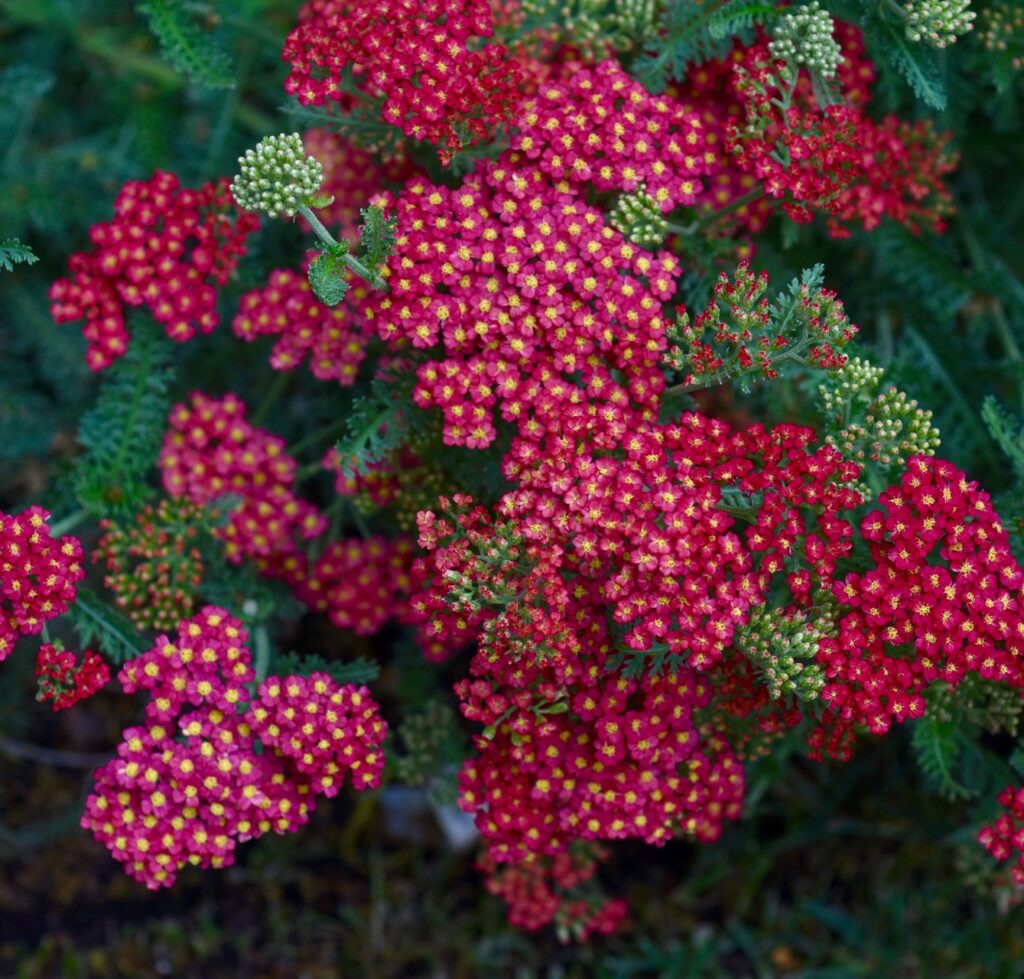
Though yarrow is sometimes considered a weed, it is a beautiful low maintenance perennial that grows in almost any condition. It blooms all the way until frost and offers lovely colour both in the garden and as a cut flower.
A member of the aster or composite family (Asteraceae), yarrow grows 1 to 3 feet (30-90 cm) tall. It has delicate, fern-like foliage and flat-topped or dome-shaped clusters of small flowers that bloom in white, cream, yellow, pink, or red colours and attracts lots of bees, butterflies and pollinators.
Yarrow loves full sun and is tolerant to drought, and therefore ideal for low-water or xeriscape gardens.
Yarrows attract beneficial aphid-eating insects and pollinating bees into the garden, that’s why they are great companion plants for many fruits and vegetables. Strawberries, apple trees, blueberries, and other fruit trees will benefit from yarrow nearby.
Cucumbers, melons, zucchini, pumpkins, and squash are better not to be grown nearby yarrows because they are susceptible to powdery mildew and so is yarrow.
Plant it alongside other perennials with similar needs, and you’ll see how well it complements other flowers and shrubs, like butterfly milkweed, bee balm, black eyed Susan.
USDA Hardiness Zones: 3–9
Blazing Star (Liatris spicata spp.)
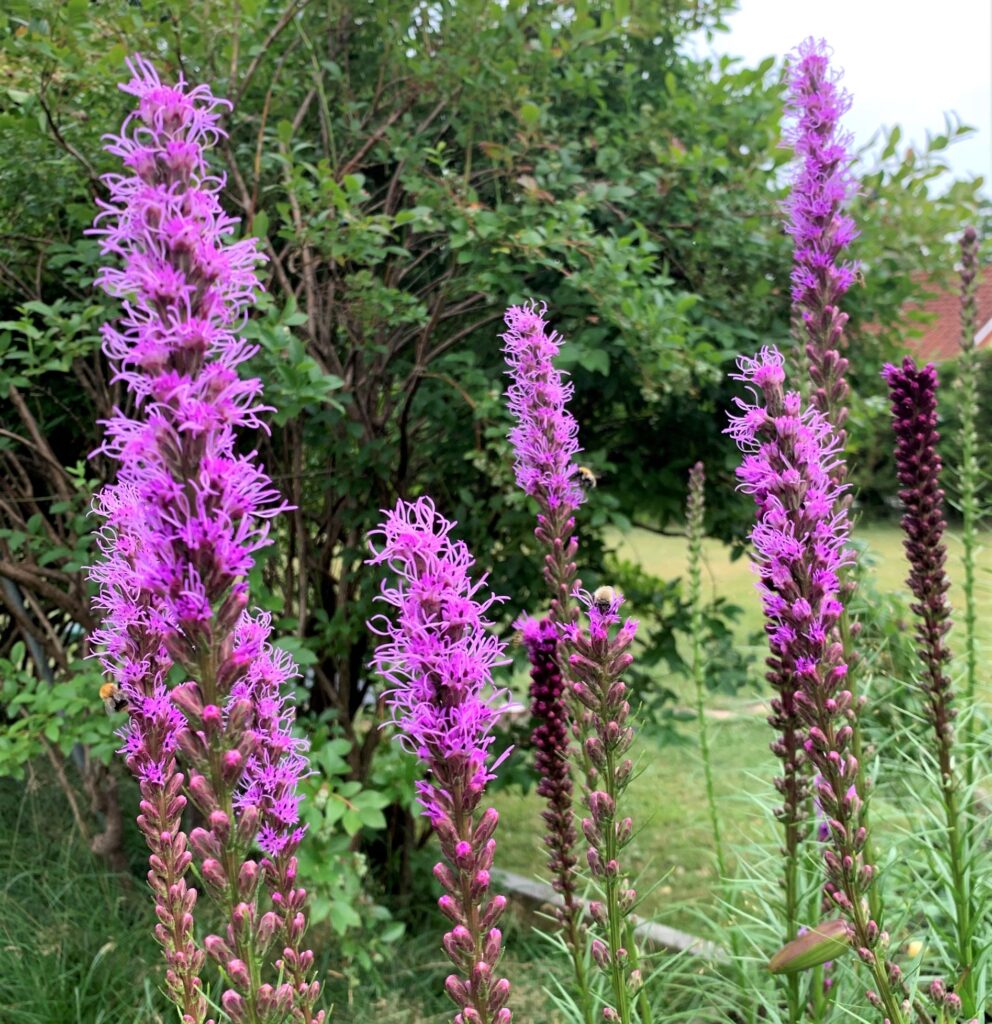
Blazing Star will add a rich shade of purple, pink, or white to your flower garden, and all it asks for is full sun exposure and moist, well-drained soil.
Blooming from mid-summer to autumn, this low maintenance perennial belongs to the Asteraceae, or aster family.
This perennial grows to about 2 to 4 feet (60-120 cm) tall with beautiful, long, fluffy flower heads that look unique and exotic and attract bees, butterflies and hummingbirds. Ripe seedheads provide a rich source of food for birds such as goldfinches and migrating songbirds.
A valuable addition to perennial gardens, these plants provide a reliable vertical contrast to broad-leaved plants like hostas.
The purple flowers contrast nicely with any orange or yellow-flowered plants such as black-eyed Susans, coreopsis, daylilies, or marigolds.
USDA Hardiness Zones: 3–9
Bleeding Heart (Dicentra spectabilis spp.)
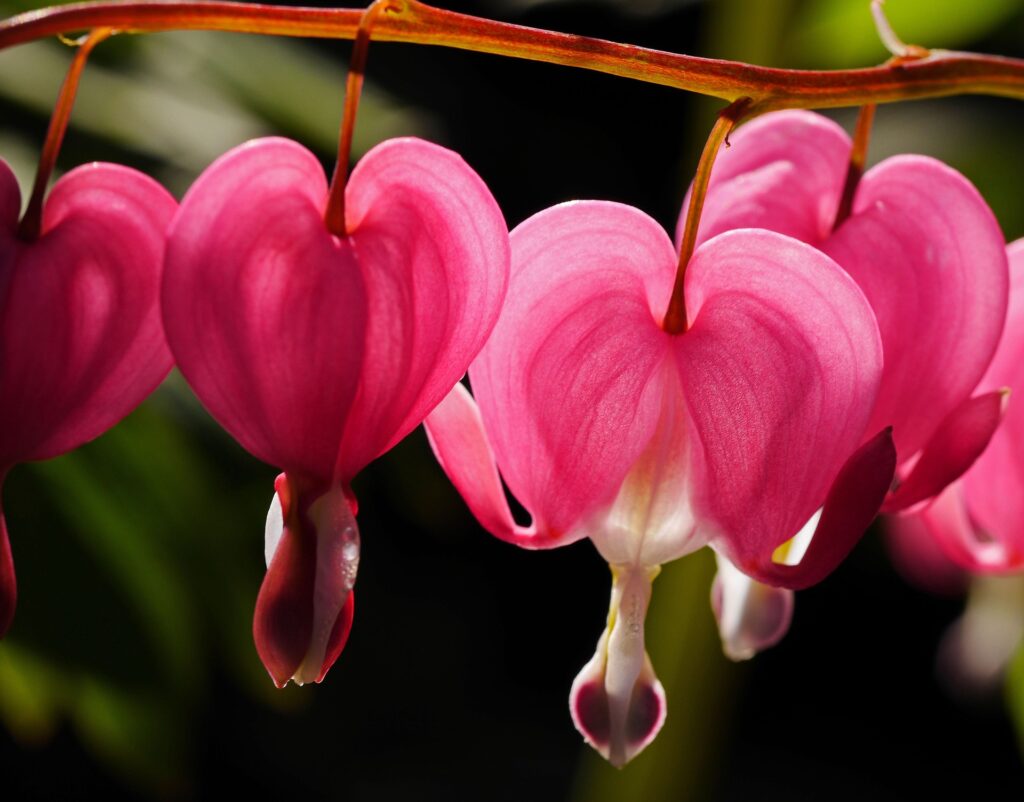
This low-maintenance perennial is such an interesting flower, with its heart-shaped and closed petals that dangle from its arched stems. It is also known as lady’s locket, lady’s heart, and lyre flower.
The bleeding heart plant belongs to the fumitory family (Fumariaceae) a subfamily of the poppy family (Papaveraceae).
It’ll bloom in your garden from April to June, and its foliage will remain green throughout the summer months. The flowers of the bleeding heart may be pink and white, or solid white, red, and yellow. It can reach a height of 2.5 feet (80cm). Bleeding heart is resistant to deer and rabbits.
Bleeding Heart loves moist and well-drained soil and prefers shade over direct sunlight.
Bleeding heart does not like being moved. It will thrive for years without being divided or replanted. If you need to transplant, do it as early as possible in spring. Be sure to wear gloves when planting bleeding heart plants as the roots are especially poisonous.
Plant shade-loving annuals, like begonias, impatiens, as well as Siberian bugloss, hostas and ferns will grow well next to bleeding heart.
USDA Hardiness Zones: 3 – 9
